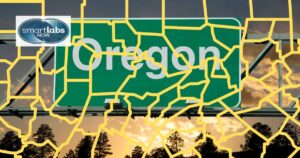
Oregon has seen significant shifts in its approach to drug possession laws over the past few years.
Once at the forefront of decriminalization through Measure 110, the state has now taken a sharp turn with the recriminalization of drug possession. These changes highlight the complex interplay of political ideologies, public health concerns, and societal inequities.
Understanding the current landscape is crucial for navigating the implications of these laws: vital learning for employers, individual drug users, and drug test providers in the state.
[Please note that this account broadly and neutrally describes the legal situation in the state – and, by extension, Portland – as it exists in the final months of 2024. For more up-to-date and precise reporting on the matter, please refer to local news sources from your city or county].
If you’re looking for comprehensive organizational or individual drug testing in Portland fully compliant with the legal framework, book here 🙂:

Oregon’s decision to recriminalize drug possession marks a reversal of Measure 110, passed in 2020, which decriminalized small amounts of drugs like heroin and methamphetamine. The policy, driven by a Democratic-controlled legislature, aimed to address social inequities and reduce overdose deaths by focusing on treatment over punishment.
While the recriminalization efforts aim to strike a balance between enforcement and support, they have sparked debates across political lines, with Republican lawmakers criticizing Measure 110’s perceived leniency and Democrats focusing on treatment access.

The rollback of Ballot Measure 110 was formalized through HB 4002, which reinstates certain penalties for drug possession while emphasizing treatment and recovery. This approach reflects lessons learned from Measure 110’s shortcomings.
HB 4002 mandates coordination between courts, local mental health providers, and law enforcement to connect individuals with treatment.
Possession for personal use now carries misdemeanor penalties, balancing accountability with rehabilitation.
Instead of immediate arrest, individuals may be redirected to a behavioral health deflection center.
Courts play a pivotal role in monitoring compliance with treatment programs, ensuring that individuals receive the necessary support.
Law enforcement is tasked with implementing the law while collaborating with behavioral health providers to reduce repeat offenses.

Counties in Oregon have taken varied approaches to the recriminalization law, reflecting local needs and resource availability.
These strategies demonstrate how counties can adapt state laws to fit their unique demographics and challenges.

Deflection programs have emerged as a cornerstone of Oregon’s new drug policy framework, redirecting individuals from the criminal justice system to treatment services.
Comprising mental health workers and peer specialists, these teams address addiction and connect individuals to services.
This innovative tool helps law enforcement route low-level public order offenses to treatment alternatives.
Counties have expanded addiction treatment programs to meet growing demand.
Deflection aligns with the goals of reducing the criminal justice footprint while supporting recovery.
Collaboration with organizations like the Drug Policy Alliance and the Oregon Criminal Justice Commission has been vital in shaping these programs.

Oregon’s approach to drug decriminalization has often been compared to Portugal’s widely lauded model. While both emphasize treatment over punishment, key differences exist.

The effectiveness of Oregon’s drug laws hinges on the availability of treatment services. However, the state faces significant gaps in this area.
Despite investments through HB 4002, capacity remains insufficient to meet the demand created by recriminalization.
A lack of public defenders has hindered the implementation of court-ordered treatment programs.
The Oregon Health Authority reports an increase in referrals but acknowledges that many individuals face long wait times.
New programs aim to address gaps, but funding and staffing remain challenges.
Expanding treatment investment and building partnerships with local providers are critical to ensuring individuals receive timely, effective care.

Oregon’s journey through drug decriminalization and recriminalization reflects a complex interplay of public health, justice, and societal equity.
While the state has made strides in emphasizing treatment over punishment, challenges remain in building a robust infrastructure to support these policies.
By learning from models like Portugal and investing in deflection programs and treatment services, Oregon can work toward a more equitable and effective approach to addressing addiction.
Please consult your primary care physician before engaging with any pharmaceutical, natural substances, or activity regimens mentioned or prescribed in this post. Smart Labs Now is not responsible for health or life outcomes based on the information or recommendations provided. This account does not serve as a substitute for professional medical advice/help.